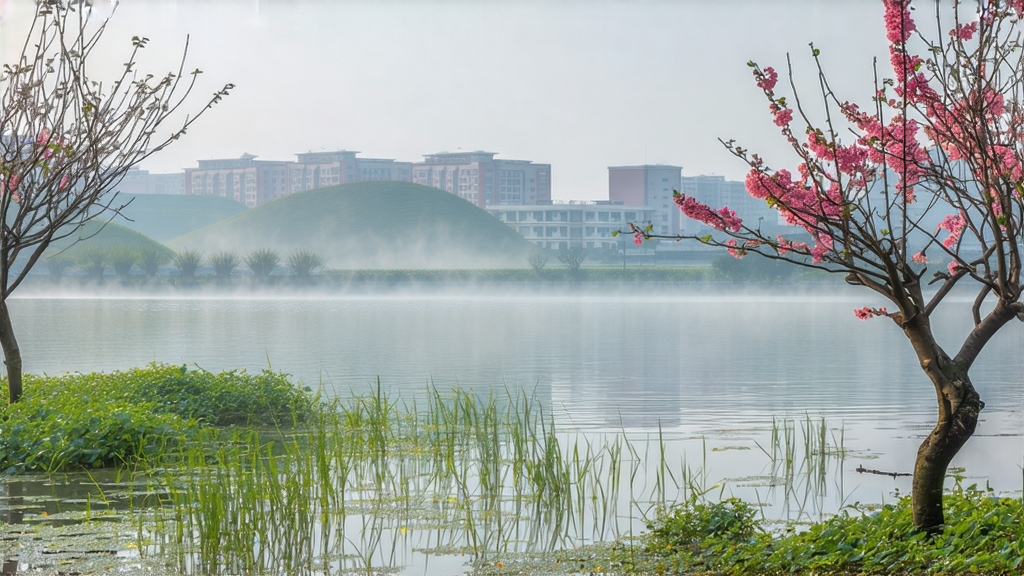
Biluochun, whose name translates literally to “Green Snail Spring,” is one of China’s ten most celebrated teas, yet it remains a delicate secret outside the circles of serious tea lovers. Grown on the mist-lapped peninsulas of Dongting Mountain that rise from Taihu Lake in Jiangsu Province, this jade-green tea is prized for its improbably tiny spiral leaves, an intoxicating orchard aroma, and a sweetness so clean it seems to rinse the palate of every previous memory. To understand Biluochun is to step into a microclimate where lake, fruit trees, and human artistry have conspired for more than a thousand years to capture spring in a cup.
Historical whispers place the tea’s birth during the Tang dynasty (618-907), but its documented fame begins in the late Ming and early Qing when local villagers offered an especially fragrant batch to the Kangxi Emperor. The story claims that the sovereign, startled by the aroma drifting from his porcelain cup, asked its name; told it was “Xia Sha Ren Xiang” (literally “scary fragrance”), he deemed the title inelegant and rechristened it Biluochun for its snail-shell shape and spring harvest. From that moment the tea became a gong cha—imperial tribute—carried by fast horses to the Forbidden City each Qingming festival. European diplomats stationed at the nineteenth-century treaty ports carried small tins back to London and St. Petersburg, where society hostesses marveled at a tea that smelled of ripe apricots yet tasted like liquid mountain air.
Strictly speaking, only leaf plucked within a 12-kilometer radius of Dongting’s East and West peaks qualifies as authentic Biluochun. The cultivars are local, descendants of a small-leaf Camellia sinensis var. sinensis that evolved to withstand humid lake fog. Two clones—Dongting Qunti and Dongting Xiaoye—are especially treasured; their tender buds contain more soluble sugars and less catechin than average, explaining the tea’s hallmark sweetness and low astringency. Farmers intercrop their bushes with peach, plum, loquat, and apricot trees; fallen petals release aromatic volatiles that the tea leaves absorb like blotting paper, creating the signature fruity bouquet no other green tea can replicate.
Harvest begins when the lake’s morning mist still clings to the hills, usually between the 20th of March and the 10th of April. Only the topmost bud plus the adjacent unfolding leaf are plucked, a state locals call “one flag, one gun.” Experienced pickers finish before 9 a.m. so that the leaf remains cool and turgid; any delay oxidizes the edges and flattens fragrance. On a good day a picker gathers barely 500 grams of fresh leaf—enough, after firing, for a single 100-gram tin of finished tea.
The craft that follows has changed little since Kangxi’s era. First comes gentle withering: the leaves are spread on bamboo trays set under shade netting for two hours, allowing surface moisture to evaporate while internal enzymes awaken. Next is the kill-green step, performed in a cast-iron wok heated to 180 °C. The tea master tosses the leaves with bare hands, feeling for the precise moment when the green vegetal note gives way to a chestnutty warmth—about four minutes. Immediately the temperature is lowered to 80 °C and the forming stage begins: the master presses, rubs, and rolls the leaf against the wok in a spiral motion, coaxing it into the tight snail shape. Finally, a brief re-firing at 60 °C reduces moisture to 6 percent and locks in fragrance. From pluck to finished tea takes four hours; hesitation at any point dulls the brightness that connoisseurs call “mountain spirit.”
To brew Biluochun respectfully, choose glass or thin porcelain so the visual drama can unfold. Weigh three grams—roughly a level teaspoon—for every 150 milliliters of water. The water itself should be spring-soft and cooled to 75 °C; hotter temperatures extract bitter catechins and flatten the fruity top notes. Pour the water first into the vessel, then let the leaves rain down; they will sink like tiny jade submarines before slowly unfurling, a performance Chinese poets liken to “spring snow melting in a green whirlpool.” Steep for forty-five seconds, strain, and inhale. The liquor is the color of liquid peridot, the aroma a seamless weave of loquat blossom, honeydew, and steamed edamame. On the